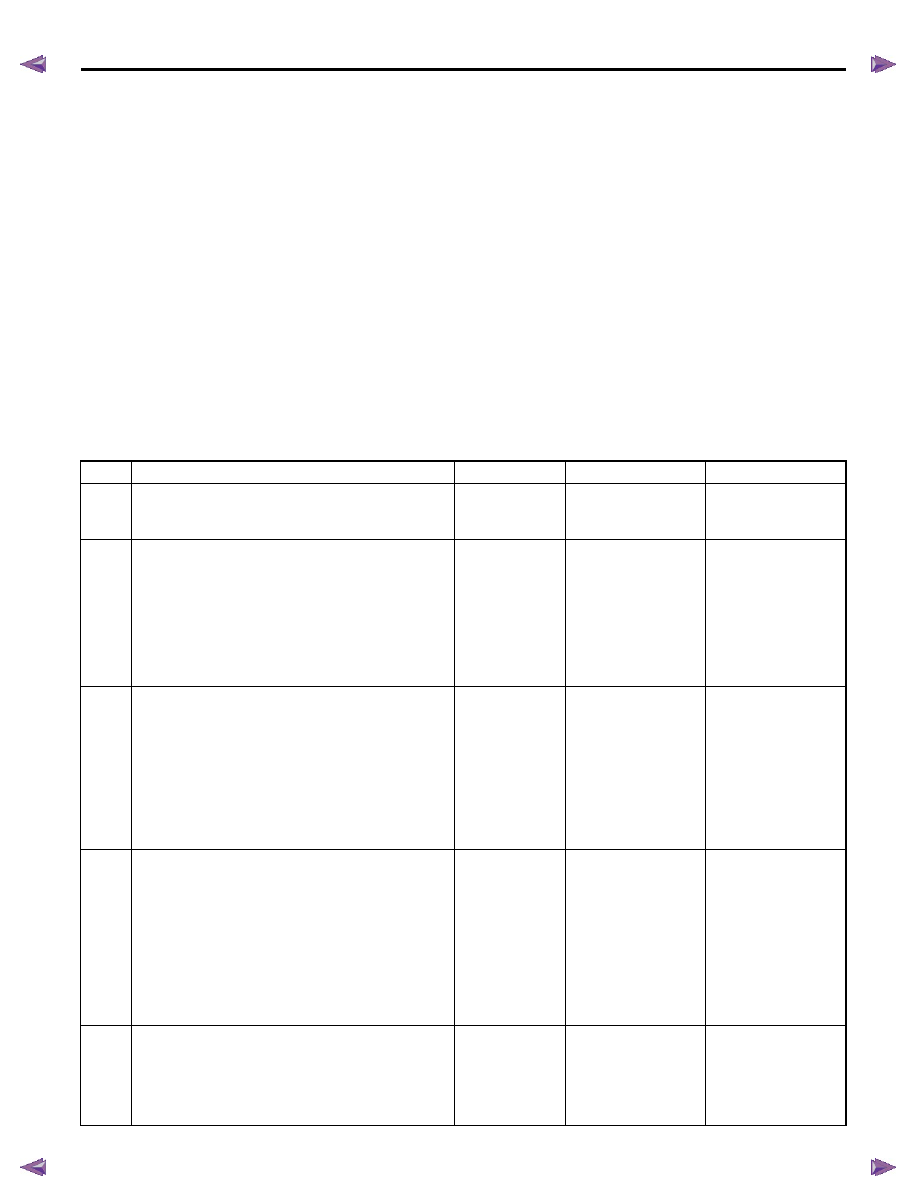Isuzu KB P190. Manual - part 420

ENGINE CONTROL SYSTEM (4JK1/4JJ1) 6E-63
Engine Cranks but Does Not Run
Description
The Engine Cranks but Does Not Run diagnostic table
is an organized approach to identifying a condition that
causes an engine to not start. The diagnostic table
directs the service technician to the appropriate system
diagnosis. The diagnostic table assumes the following
conditions are met:
• The battery is completely charged and terminals
are cleaned and tight.
• The engine cranking speed is normal.
• There is adequate fuel in the fuel tank.
• There is no fuel leak in the fuel line.
• There is no air in the fuel line.
• Filters (air, fuel) are clean.
• Fuse and slow blow fuse are normal.
Diagnostic Aids
• If an intermittent condition is suspected, refer to
Intermittent Conditions in this section.
Test Description
The number below refers to the step number on the
Circuit/ System Testing.
5. If the fuel rail pressure (FRP) regulator low side
circuits between the ECM and the FRP regulator are
shorted to ground, FRP Regulator Feedback will be
approximately 400mA lower as compared with normal.
Schematic Reference: Engine Controls Schematics
Connector End View Reference: Engine Controls
Connector End Views or ECM Connector End Views
Circuit/ System Testing Engine Cranks but Does Not Run (1of 2)
Step
Action
Value(s)
Yes
No
1
Did you perform the Diagnostic System Check -
Engine Controls?
—
Go to Step 2
Go to Diagnostic
System Check -
Engine Controls
2
1.
Install a scan tool.
2.
Turn OFF the ignition for 30 seconds.
3.
Crank the engine for the specified amount of
time.
4.
Monitor the DTC Information with a scan tool.
Does the scan tool display any DTCs that failed this
ignition?
15 seconds
Go to Applicable
DTC
Go to Step 3
3
1.
Turn OFF the ignition.
2.
Wait 1 minute for the fuel pressure to bleed
down from the fuel rail.
3.
Turn ON the ignition, with the engine OFF. DO
NOT start the engine.
4.
Observe the Fuel Rail Pressure parameter
with a scan tool.
Does the scan tool indicate the specified value?
0 MPa (0 psi)
Go to Step 4
Go to Step 6
4
Notice: If the vehicle has run out of fuel, air may
be trapped in the fuel system.
1.
Make sure the fuel tank have adequate fuel
and the fuel quality is good (take a sample).
2.
Observe the Fuel Rail Pressure parameter on
the scan tool while cranking over the engine
for 5 seconds.
Does the scan tool indicate more than the specified
value during crank?
20 MPa (2,900
psi)
Go to Step 9
Go to Step 5
5
Observe the FRP Regulator Feedback parameter
on the scan tool while cranking over the engine for
5 seconds.
Does the scan tool indicate more than the specified
value during crank?
1500 mA
Go to 2 of 2 Step 1
Go to Step 8